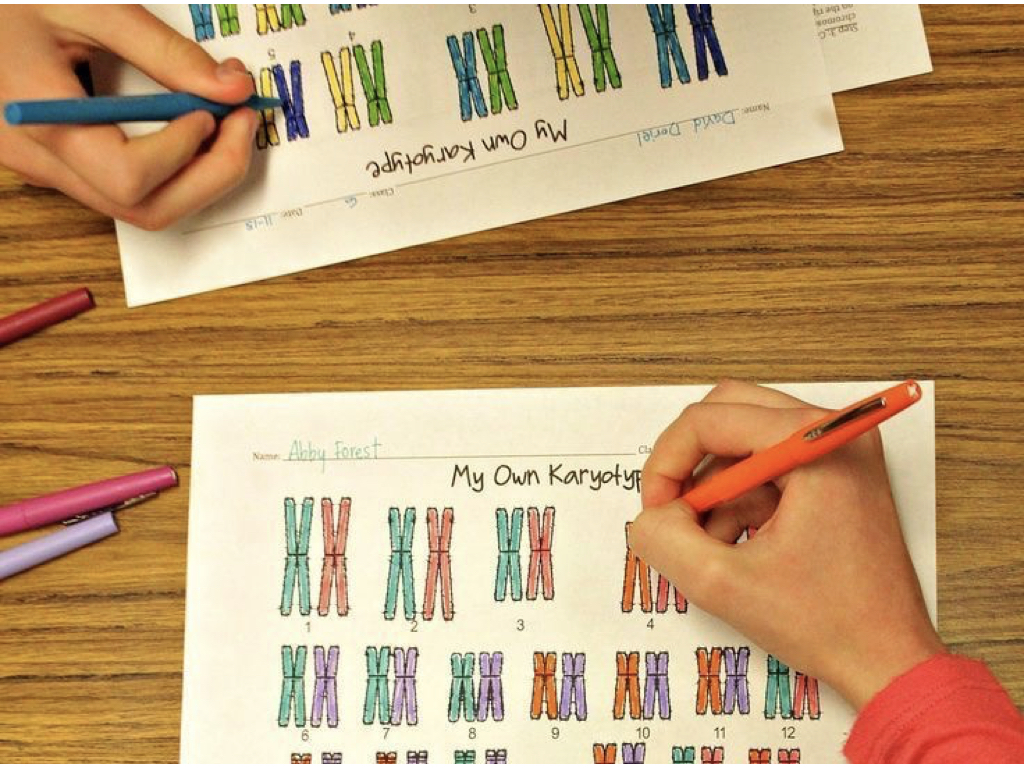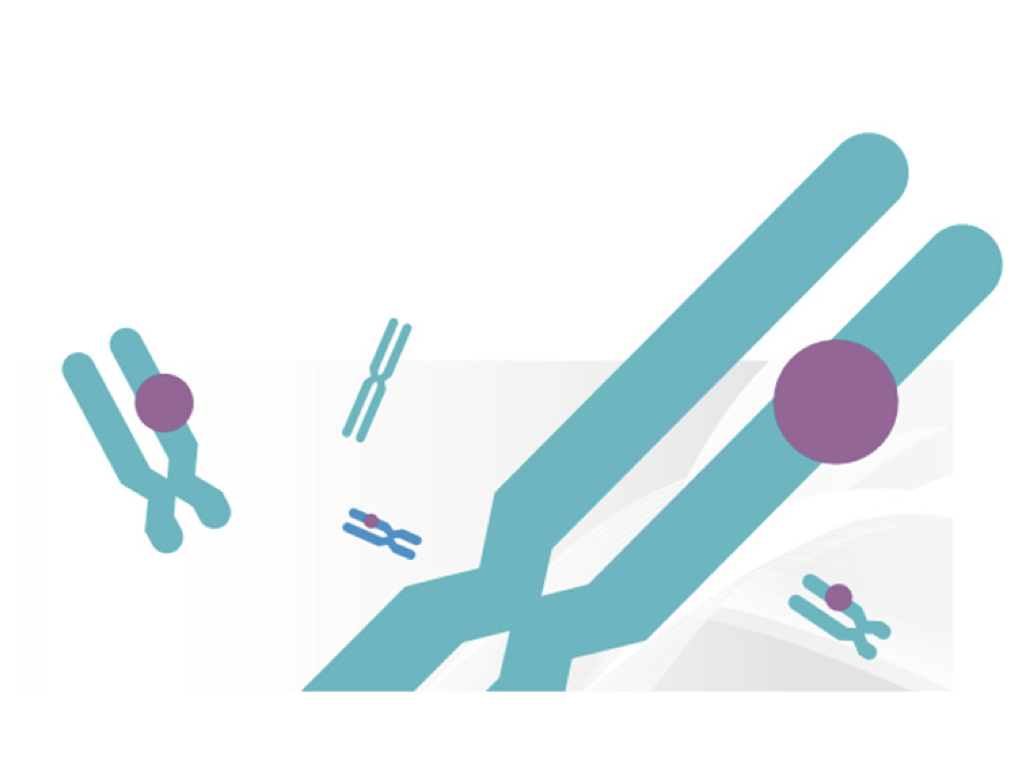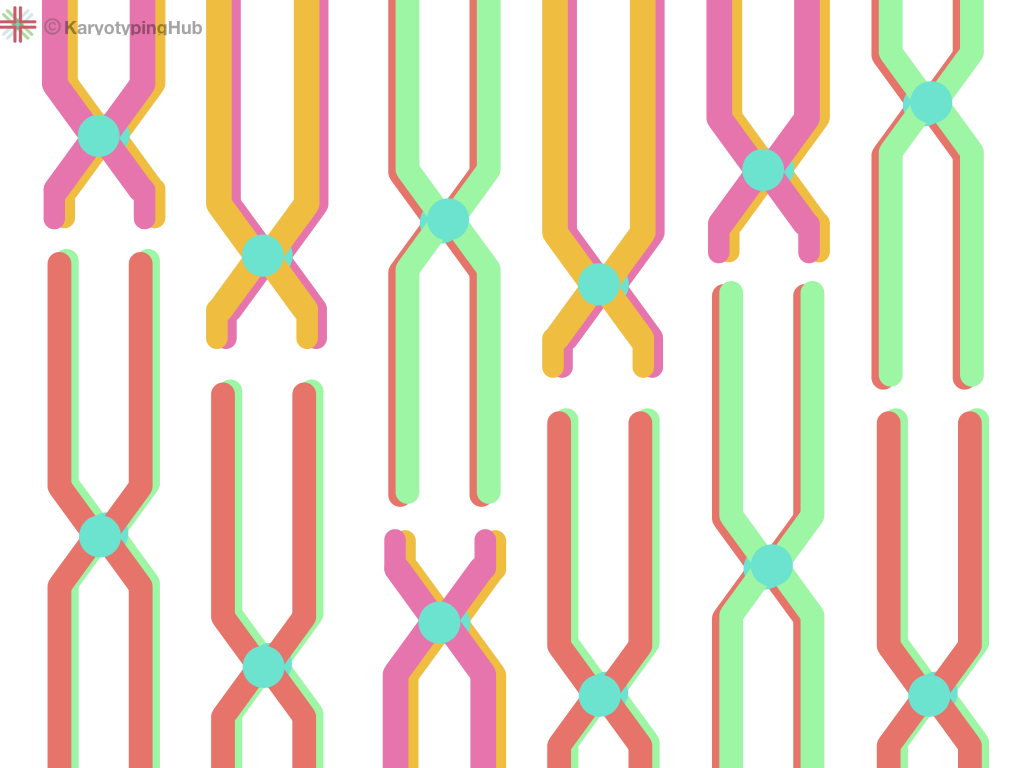A human karyotype is a whole set of human chromosomes, having all the genetic content or material of a cell. It is prepared to reveal or study the chromosomes and related disorders if any.
We, humans, have 23 pairs of chromosomes, which means, a total of 46 chromosomes. The chromosome is actually a complex network of protein and DNA. In this article, we will discuss what does a human karyotype reveal or what information it gives.
Read more: What is karyotyping?
A karyotype is in a pair:
We are diploid animal, thus as we said, a human karyotype arranged pairwise. simply put, two copies of every chromosome are present in a cell. See the image below.
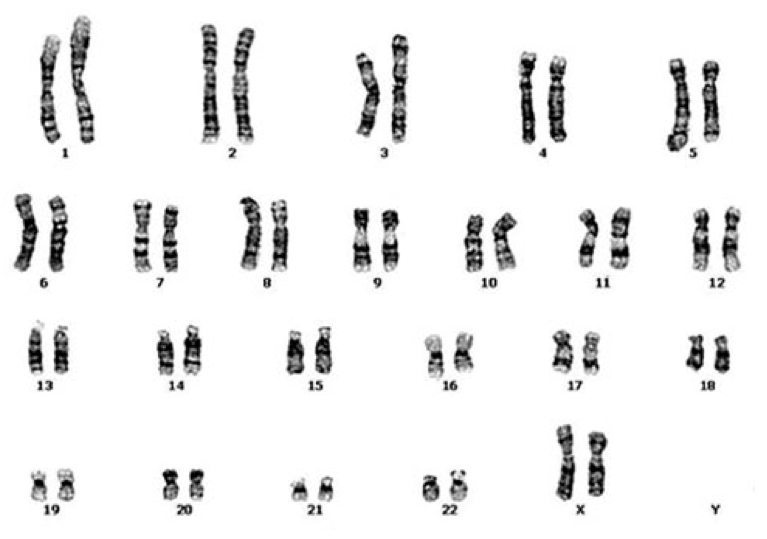
Interestingly, majorities of animals are diploid, though, wasp, male bees, and ant are haploid which means these animals have a single set of chromosomes. They are developed from the unfertilized eggs.
germs cells in humans also are haploid in nature. 23 chromosomes from sperm and 23 chromosomes from egg fertilize to form a zygote of 46 chromosomes. A karyotype of germ cells (either egg or sperm) have only 23 chromosomes.
XX/XY system:
The human karyotype revealed that humans have XX/XY type of sex chromosomes system. Although it is not necessary to all other animals have the same system. For instance, the birds have ZW system.
Notably, some animals such as male bees, wasps, and ant don’t have sex chromosomes. our karyotype indicates that the male has a small Y chromosome with one large X chromosome while the females have two XX chromosomes.
X and Y are different:
A karyotype also gives information that even though both are sex chromosomes, their size is different. The Y chromosome is small acrocentric and have few chromosomes while the X chromosomes are large metacentric.
The Y chromosome has a very small p arm in comparison with the X chromosome.
Not all chromosomes are the same:
The human karyotype also reveals that not all the chromosomes are the same in size and therefore different chromosomes have a different amount of genetic material.
human chromosomes are classified into metacentric, submetacentric, small metacentric, acrocentric and small acrocentric.
Take a look at the chart below,
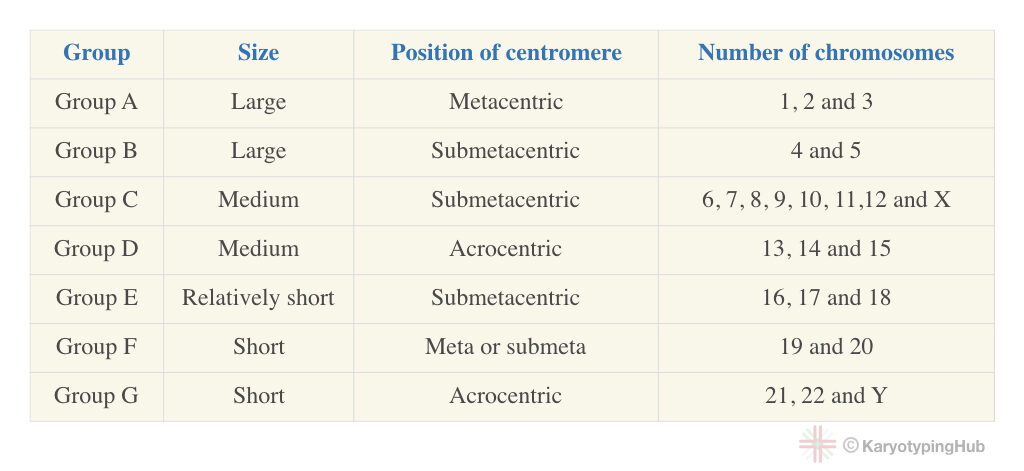
Lack of telocentric chromosomes:
One of the important pieces of information we get from human chromosomes is that we do not have telocentric chromosomes.
In telocentric chromosomes only a single chromosome arm is present. This type of chromosome is observed in cows and buffalo.
Note: A telomere is an important part of the chromosome located on the extreme edge of chromosomes. It contains only repetitive DNA sequence and doesn’t have genes to form protein.
The telomere protects from the end replication problem. After every cell cycle, some portion of telomeric sequences are lost and we age. If you want to learn more about telomere and aging please read this external article: Telomere- definition, structure, function and relation with aging.
“We need some portion of the telomere.”
Heterochromatin and euchromatin region:
Human karyotype also shows that the genetic material on chromosomes are not evenly distributed or packed. Some of portion is tightly packed while some are smooth.
The tightly packed regions create the heterochromatic regions and stains light blue while the loosely packed region creates the euchromatin regions and are stains darker.
Conclusively, the euchromatin and heterochromatin region created different banding patterns for different chromosomes. See the image below.
The euchromatin regions are more gene-rich and are readily available for replication.
A complex network of DNA and protein:
We know that right! But how a karyotype reveals that? that is the question.
If you are a regular follower or reader of this blog, you probably know the answer, But never mind i will explain it again.
First, go to the article examples of karyotyping and see example 4. When we perform GTG banding we are treating chromosomes with Giemsa-trypsin-giemsa simultaneously.
Trypsin is an enzyme, overexposure of chromosomes in trypsin can digest the protein portion of chromosomes. and we get the results shown in example 4. Go and analyze the image.
It indicated that protein portion is also there on chromosomes.
Shape of chromosomes:
The human karyotype shows us that the chromosomes are X-shaped, and have two arms and 4 chromatids. See the figure below,
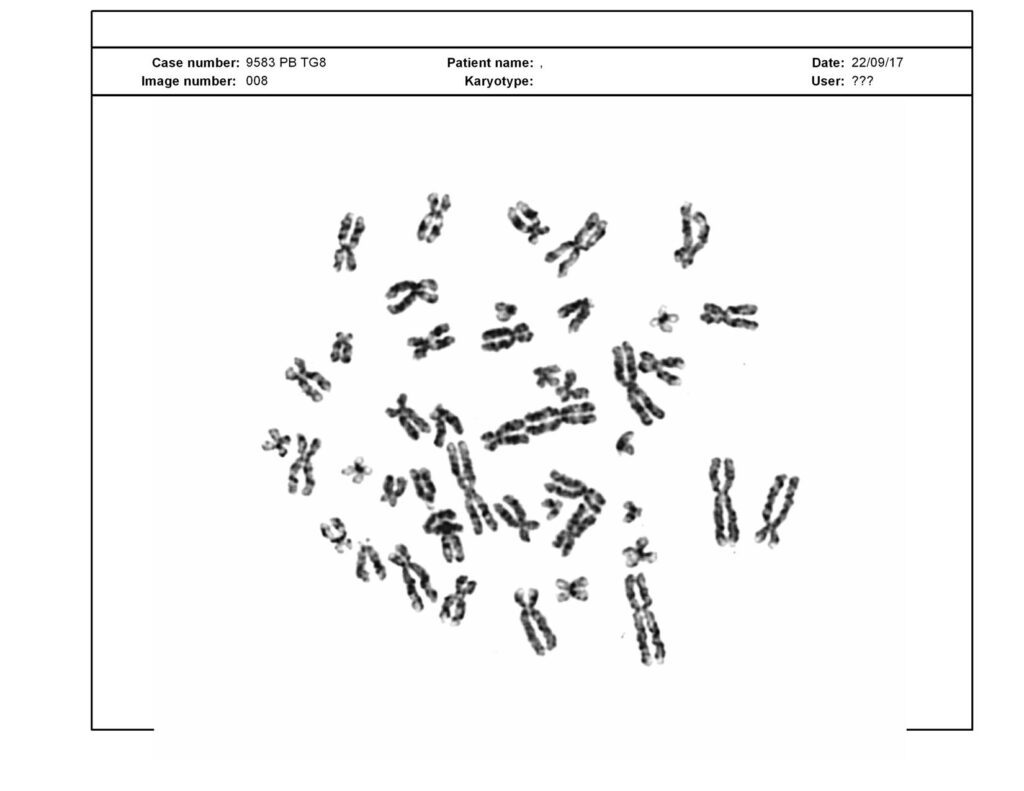
Although as we said some chromosomes are acrocentric, means, one arm is too smaller that it can’t be visible properly (but are not telocentric).
Conclusion:
In addition to all this information, by studying human karyotypes we can get information on whether a person or baby is suffering from any chromosomal abnormality or not. However, sometimes the exact reason for that can’t be predicted.

